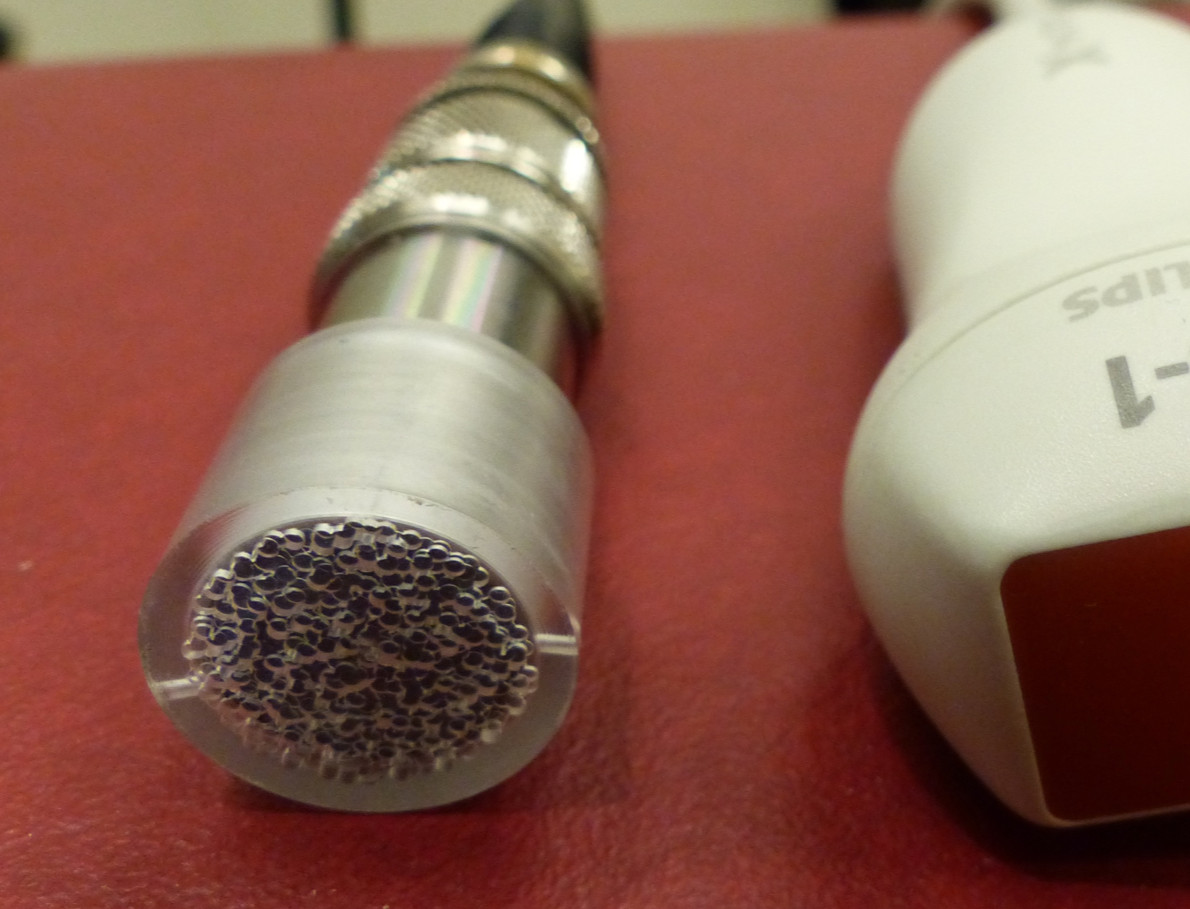Three-dimensional Ultrasound Imaging Through Compressive Spatial Coding (TOUCAN)
Three-dimensional ultrasound is a very powerful imaging technique, but it requires transducers that accommodate thousands of sensors and complex hardware which restricts its use to specialized clinical applications in developed countries. Manufacturing this type of transducers is complex and very costly. In this project, we pursue a novel approach that can overcome this limitation and make 3D imaging simply available to any application by making use of a technique called compressive sensing.
The main technological idea behind the TOUCAN project is that a simple plastic coding mask is already enough to compress the 3D information in such a way that you need far less sensors. This concept can be applied to extend the imaging capabilities of commercial ultrasound probes from 2D to 3D, but also opens up the possibility for a new type of wearable imaging device for long time monitoring/imaging of various organs such as the brain or the carotid artery. We published this principle in Science Advances in 2018, where we imaged a 3D volume with just a single sensor and such a simple plastic compressive coding mask. In the TOUCAN project we want to take this concept to a new level that will enable simple 3D ultrasound for a wide range of applications.
The results will lead to new applications where wearable ultrasound sensors can be used to monitor organs such as the carotid artery and the brain in both humans and animals for long periods of time.

Project data
| Researchers: | Geert Leus, Hans Bosch (EMC), Pieter Kruizinga (EMC), Didem Doğan Başk |
|---|---|
| Starting date: | July 2019 |
| Closing date: | July 2023 |
| Funding: | 870 kE; related to group 250 kE |
| Partners: | Erasmus Medical Center |
| Users: | Vernon, Usono, Microflown, Cardialysis |
| Contact: | Geert Leus |